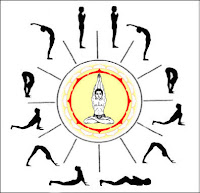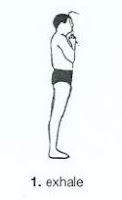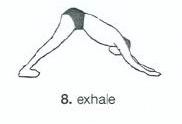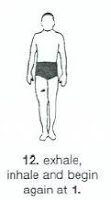Navagraha Temples in Tamilnadu are the 9 temples dedicated to Navagrahas
– the nine celestial planets of Hindu astronomy. These nine Navagraha
temples are located near Kumbakonam in Tamil Nadu. Each of these
Navagraha shrines is situated in a different village, and is dedicated
to one of the 9 Navagrahas. That is, the first temple Sooriyanar Kovil
is dedicated to Lord Surya, while the second temple Thingaloor Chandra Navagrahastalam is dedicated to Lord Chandra likewise. However, an interesting aspect is that majority of the temples enshrine Lord Shiva as the primary deity.
Among these 9 temples, Suryanar Temple, dedicated to Lord Surya, is the only temple where Lord Surya is worshipped as the principal deity. This temple is dedicated to the Sun God and all the remaining 8 Grahas – Chandra (Moon), Chevvaai or Mangal (Mars), Budhan (Mercury), Guru or Brihaspati (Jupiter), Shukra (Venus), Shani (Saturn), Rahu and Kethu. Below is the list of 9 temples dedicated to Navagraha Planets.
Navagraha Temples and Their Location
1) Suriyanar Koil of Sun God
Suriyanar Temple is dedicated to Hindu Sun God and is situated 3 km from Aduthurai, which is on the Kumbakonam - Mayiladuthurai Road in Tamil Nadu. More Info about Suriyanar Temple here
2) Thingaloor Temple
Thingaloor Kailasanathar Temple is dedicated to Lord Chandra or Moon God and is situated 1.5 km from Thirupayhanam, on the Kumbakonam - Thiruvayyaru Road. Read more about Thingaloor Chandra Temple here
3) Vaitheeswaran Kovil
Vaitheeswaran Temple is dedicated to Angaraka (Sewai or Chowa) and is situated 4 km from Mayiladuthurai, on the Chidambaram Road. Read More here
4) Thiruvenkadu Temple
Thiruvenkadu Swetharanyeswarar Temple is dedicated to Lord Budha and is situated 10 km south-east of Sirkali. Read More here
5) Alangudi Temple
Alangudi Abathsahayeswarar Temple is dedicated to Brihaspati (Guru or Vyazhan or Planet Jupiter) and is about 15 km from Kumbakonam on the way to Needamangalam. Read More about Temple here
6) Kanjanoor Temple
Kanjanoor Agneeswarar Temple is dedicated to Sukran (Velli or Planet Venus) and is located at an interior village on the Mayiladuthurai - Kathiramangalam Road. Read More here
7) Thirunallar Temple
Thirunallar Darbaranyeswarar Temple is dedicated to Lord Shani (Sani or Saturn) and is located 5 km on the way to Peralam - Karaikkal. Read More here
8) Thirunageswaram Temple
Thirunageswaram Naganathaswamy Temple is dedicated to Lord Rahu and is situated about 7 km from
Kumbakonam - Karaikkal Road. Read More here
9) Keezhperumpallam Temple
Keezhperumpallam Temple is dedicated to Lord Kethu and is situated near Poompuhar on the Mayiladuthurai - Poompuhar Road. Read More here
Among these 9 temples, Suryanar Temple, dedicated to Lord Surya, is the only temple where Lord Surya is worshipped as the principal deity. This temple is dedicated to the Sun God and all the remaining 8 Grahas – Chandra (Moon), Chevvaai or Mangal (Mars), Budhan (Mercury), Guru or Brihaspati (Jupiter), Shukra (Venus), Shani (Saturn), Rahu and Kethu. Below is the list of 9 temples dedicated to Navagraha Planets.
Navagraha Temples and Their Location
1) Suriyanar Koil of Sun God
Suriyanar Temple is dedicated to Hindu Sun God and is situated 3 km from Aduthurai, which is on the Kumbakonam - Mayiladuthurai Road in Tamil Nadu. More Info about Suriyanar Temple here
2) Thingaloor Temple
Thingaloor Kailasanathar Temple is dedicated to Lord Chandra or Moon God and is situated 1.5 km from Thirupayhanam, on the Kumbakonam - Thiruvayyaru Road. Read more about Thingaloor Chandra Temple here
3) Vaitheeswaran Kovil
Vaitheeswaran Temple is dedicated to Angaraka (Sewai or Chowa) and is situated 4 km from Mayiladuthurai, on the Chidambaram Road. Read More here
4) Thiruvenkadu Temple
Thiruvenkadu Swetharanyeswarar Temple is dedicated to Lord Budha and is situated 10 km south-east of Sirkali. Read More here
5) Alangudi Temple
Alangudi Abathsahayeswarar Temple is dedicated to Brihaspati (Guru or Vyazhan or Planet Jupiter) and is about 15 km from Kumbakonam on the way to Needamangalam. Read More about Temple here
6) Kanjanoor Temple
Kanjanoor Agneeswarar Temple is dedicated to Sukran (Velli or Planet Venus) and is located at an interior village on the Mayiladuthurai - Kathiramangalam Road. Read More here
7) Thirunallar Temple
Thirunallar Darbaranyeswarar Temple is dedicated to Lord Shani (Sani or Saturn) and is located 5 km on the way to Peralam - Karaikkal. Read More here
8) Thirunageswaram Temple
Thirunageswaram Naganathaswamy Temple is dedicated to Lord Rahu and is situated about 7 km from
Kumbakonam - Karaikkal Road. Read More here
9) Keezhperumpallam Temple
Keezhperumpallam Temple is dedicated to Lord Kethu and is situated near Poompuhar on the Mayiladuthurai - Poompuhar Road. Read More here






















